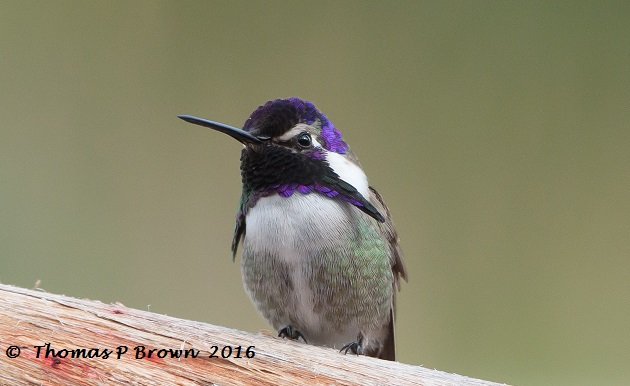
Ahh, for the love of Hummingbirds! I mean, who doesn’t love these energetic little beauties? I grew up in the great Pacific Northwest, and hummingbirds sightings were few and far between. We saw an Anna’s every now and then, and even rarer yet was the Rufous Hummingbird. So, I was very excited to be spending some time in Mexico. Having pretty much memorized my Sibley Guide, I knew that there was going to be a whole new group of hummingbirds to add to my Life List. The names, the colors, they were all fascinating to me. Broad-billed, White-eared, Berylline, Green-breasted Mango, and of course the Magnificent Hummingbird were all names I longed to have right there alongside my paltry two species. The bulk of the fifty species here in Mexico, all live on the other side of the Sea of Cortez, on the mainland part of Mexico.
Alas, our adventure has only carried us to the southern half of Baja California. This did result in a few new species. The Costa’s, The Black-chinned, and the Xanthus’s. We do have a rare Anna’s show up every now and then, but for the most part, my hummingbird search is limited to the very common Costa’s. Now, don’t get me wrong, the Costa’s is a truly beautiful bird. The easily identifiable purple gorget, when seen in the right light, is stunning.
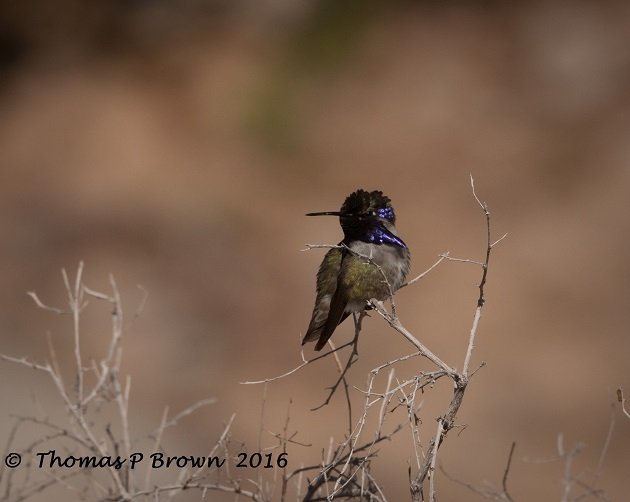
Male Costa’s at Playa Coyote
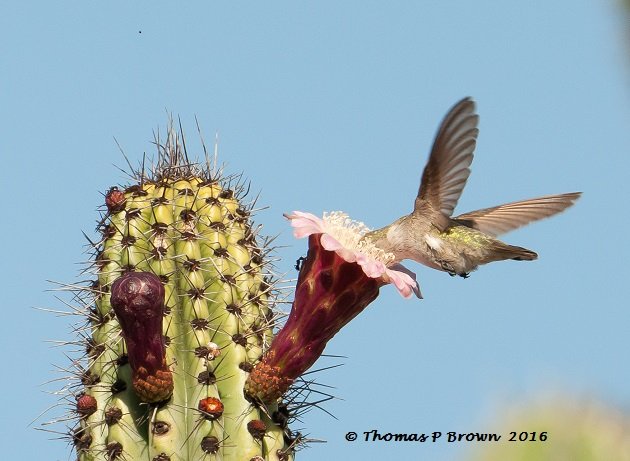
Female Costa’s Hummingbird in a Cardon Cactus bloom
Of late, I have made it my quest to get the ultimate photo of the Xanthus’s Hummingbird. The Xanthus’s is one of the endemic species here on the Baja. Its range is typically limited to the southern half of the Baja, or Baja California Sur. While I have no scientific proof, this species tends to be found in the drier, less populated areas. While this does not mean they wont be seen at an occasional feeder, they seem to prefer the scrub brush and arroyos. Similar to the White-eared Hummingbird that is occasionally seen in Arizona, its white eyebrow is slightly less prominent. Most of the Xanthus’s Hummingbirds that I have photographed have had a slight dip in their black tipped bill.
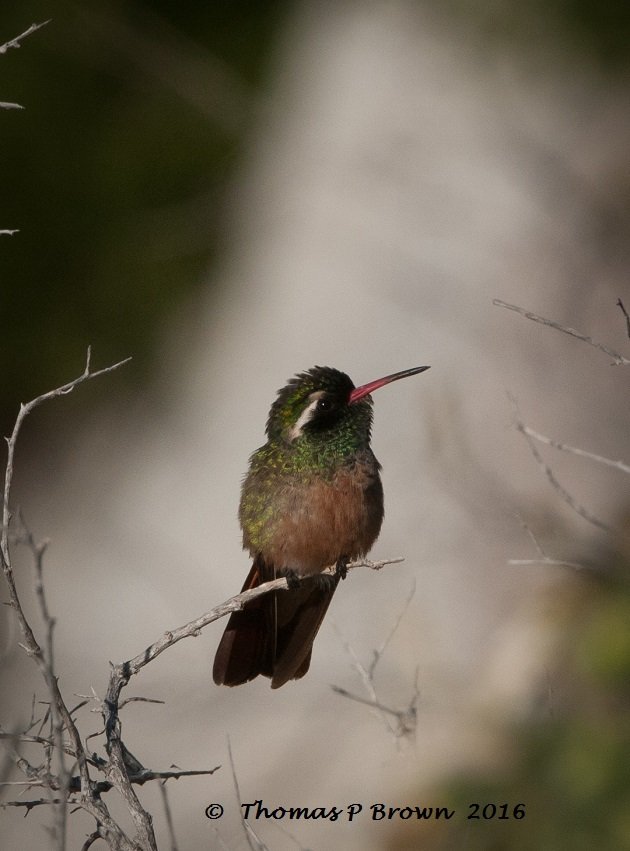
Male Xanthus’s Hummingbird
Xanthus’s are quite solitary, rarely seen with their species, or any others. One of the great phenomena that I have seen a couple of times, is when there will be a single plant out in the middle of the desert come into bloom, with out another similar plant around. Butterflies, orioles, and hummingbirds will amass at a plant like this in amazing numbers. Last summer, such a plant bloomed near Playa Coyote, near the Cerralvo Channel of the Sea of Cortez. I counted nearly 30 Costa’s Hummingbirds, countless butterflies, but none of our antisocial Xanthus’s to be seen. This on a bush that was ten meters by ten meters. Just last weekend, while on a shoot near La Ventanna, Mexico, I hiked to what I call the “Hummingbird Bush”, a Baja California Rock-nettle, Eucnide cordate, located 3/4 of a mile up an arroyo. This plant produces a lovely white flower, and seems to be in bloom well over half the year. Early Sunday morning, there were 6-8 Costa’s feeding on the plant, while the only Xanthus’s stayed well away, feeding on a nearly dead shriveled up section of plant across the creek bed.
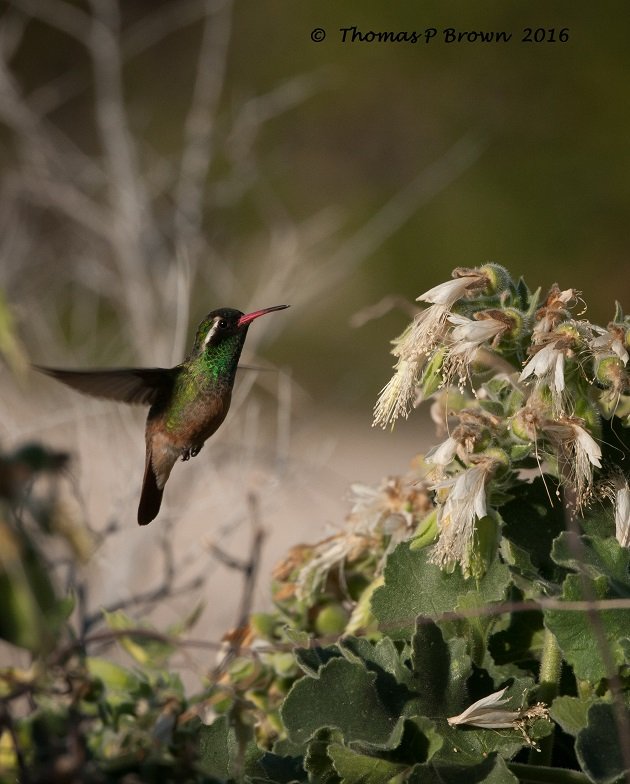
So far, this is my favorite Xanthus’s Photo, feeding at the Rock-nettle
Someday, our little sailboat will untie her dock lines and our adventure will continue. We will sail across the Sea of Cortez to the mainland of Mexico, and then all those lovely hummingbird names that I have dreamed of, will come true.
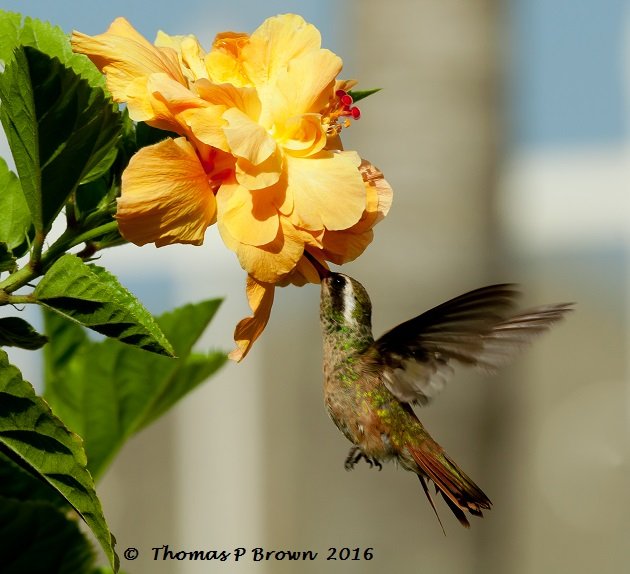










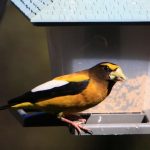
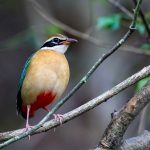
Tom: You really need to get over to the mainland! I get Beryllines and Broad-billed every day in my Morelia garden. Violet-crowneds and White-eareds are easy to see, too, if you go to the right places. Plus Red-headed Tanagers, Gray-barred Wrens, White-striped Woodcreepers, Transvolcanic Jays… just to mention a few of the more reliable specialties of only one of my favorite birding sites. 243 species and counting within an hour of Morelia, since the first of this year. 8 if these species were hummers.
Thanks Paul, Looks like a great town….with a beautiful historic area. If I make a trip your way, can I contact you with some recommendation for areas to visit?
Tom
A personal guide, a bedroom, they are yours for the asking. Just not on Sunday, since we´re pastors here. Check the e-bird hotspots around Morelia and you’ll see my name everywhere, as well as the birds you’re most likely to see (I like the bar chart function best).
Does 1000 Birds give you the contact info?
Beautiful photos of the hummingbirds with desert flowers! My experience in the Pacific Northwest is different. I live on the Olympic Peninsula where we see Anna’s every day all year, and abundant Rufous in the spring and summer. We currently have six or seven in our garden feeding from two feeders that we have to refill daily.
Thanks Wendy, I appreciate the nice words. I grew up out on the eastern side, both in Oregon and Washington. I got to see both species once I moved to the Seattle area, in Federal Way and then out to the Ballard/Fremont area. I wish I had gotten more time to explore the Peninsula while we lived there, it is truly a beautiful area.